Youtube Ads Best Practices: 11 Tips For Creating Ads That Win
Posted on 2023-11-16
Introduction

You know YouTube ads matter. But getting them right, applying YouTube Ads best practices? That can feel like a puzzle. Millions of potential views, but how many will really engage or click?
If you're fed up with low click-throughs and a lack of engagement, you're not alone. And you've come to the right place.
In this article, we will share 11 straightforward tips to increase CTR and Conversion Rate from your YouTube ad campaign. Let's dive in.
For a complete Youtube Ads beginner's guide, check out our article.
1. Keep the length of video ads between 20 seconds and 3 minutes
Video ads should be between 20 seconds and 3 minutes. The three most-watched video ads Google highlighted in March 2023 all fit within these parameters. Any shorter might not explain enough, any longer might bore viewers.
Put the most important info at the start. Many viewers stop watching after 45 seconds, so make your point before then. But remember, YouTube users might watch longer than on other platforms because they're there to watch videos in the first place. The quality of your video must stay consistent from start to finish.
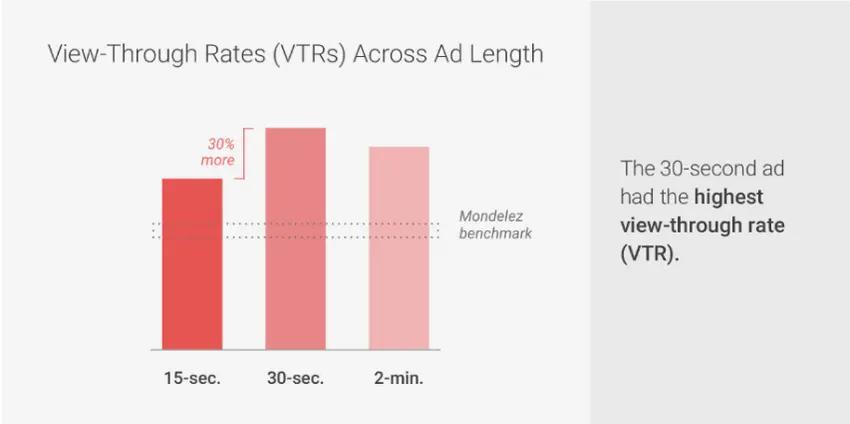
2. Create a compelling story
The entire video should be lively and hold the viewer’s attention. This is the key to effective video ads.
To achieve this, you just need a compelling story. Youtube video ads with great storytelling have a higher conversion rate than ads that have a much higher quality of visuals but poor stories. Follow the ABCD framework:
- Attract: Draw in your audience right away. This could be a surprise element, a question, or a bold statement. The key is to grab their attention in the first few seconds.
- Brand: Weave your product into your story naturally. Show it being used in realistic scenarios so viewers can see how it fits into their lives.
- Connect: Create an emotional bond with your audience. This could be through humor, creating a sense of belonging, or tapping into nostalgia. The aim is to associate your brand with these positive feelings.
- Direct: Finally, be clear about what you want viewers to do next. This could be visiting your website, subscribing to your channel, or purchasing your product. Always include a clear call-to-action to guide them.
Let's look at an example of a successful ad that uses these techniques.
https://youtu.be/1YDG0qtdayI
- The ad grabs attention right away with its focus on characters and fast-paced storytelling.
- The color palette of the video itself, the clothing the characters wear, and the phones they are holding is dominated by shades of red. Together with the white of the subtitles, this communicates Vodaphone's brand.
- The emotional connection is established through the singer Sam Ryder.
- Finally, the video directs the viewer towards Vodaphone EVO contracts.
And the best part? All of this happens just within 20 seconds.
3. Lead your video advertising with hooks.
A hook is a scene at the beginning of your video that tells the viewer why the ad is worth watching.
Without a hook, viewers may ignore your ad regardless of its high production quality and storytelling.
A well-produced video hook gives viewers a reason to watch. For instance, a hook can be the highlight of your story, an unexpected datapoint, or a teaser of what’s to come.
Here are the types of hooks and how you can use them:
- Preview: Begin with a glimpse of what's coming up in your ad, like a cool scene or interesting fact. This creates anticipation and encourages viewers to watch more.
- Question: Open your ad with a curious question related to your product or service. This sparks interest and makes viewers want to watch for the answer.
- Problem: Start with a common problem your audience can relate to. As your ad continues, show how your product or service is the solution.
- Shock: Grab attention immediately with a surprising fact or image. Just make sure it aligns with your ad's overall message.
- Story: Kick off with the beginning of an engaging story. This will make viewers want to stick around to see how it ends.
- Humor: Begin with a joke or funny situation to entertain viewers right from the start. Keep it relevant and tasteful.
- Promise: Promise viewers something they'll gain from your product or service. This gives them a reason to keep watching.
4. Be clear about what your business offers
Explain your business clearly: Show and tell what your product or service does in simple language. Make it easy for viewers to see how it can help them.
Keep your brand voice the same: Your ads should sound like they're coming from the same place as your other communications. This makes your brand more familiar and trustworthy to your audience. For example, if your brand is fun and young, your video ads should also be fun and cater to young people.
Because the video may be your sole communication with your viewers. You need need to keep your brand voice consistent. https://youtu.be/jeSuXf0deOo
5. Design ads for mobile.
To make video features appear optimally across different mobile devices, prepare video assets in these vertical dimensions/aspect ratios: 16:9, 2:3, 1:1, or 9:16 (recommended).
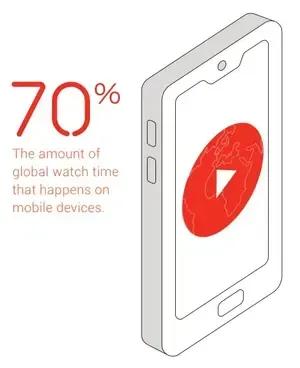
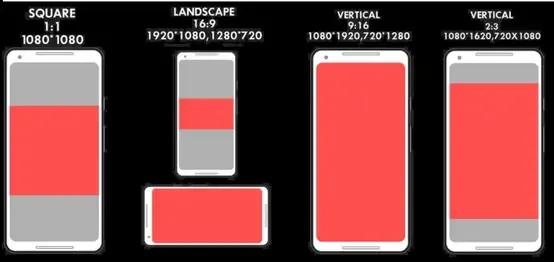
Important: Don’t use burn-in bars, as this prevents YouTube from displaying your video in the best way!
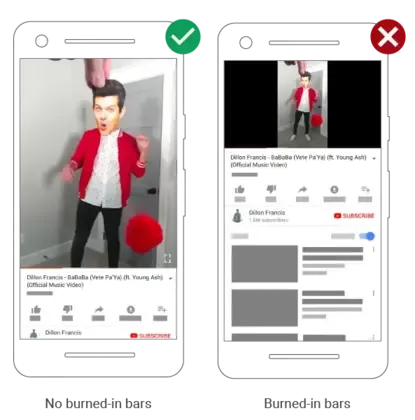
6. Tell viewers what you want them to do
Remind viewers to take a specific action, like visiting the landing page on your website or buying your product. Tell consumers how to interact with you and under what terms (access, offers, pricing, CTAs, etc.). https://youtu.be/ap9pMjR8Yd4
7. Pay attention to the quality of the video.
Low-quality videos are not suitable for your Youtube channel or advertising. Use at least 720p or 1280×720, but we recommend using 1080p, or 1920 x 1080 as the ideal YouTube video dimensions for a standard video.
8. Design for Sound-off Viewing
Add open captions to your video ads to catch the attention of viewers scrolling with their sound off. Remember, your message needs to come across effectively even in silence.
9. Incorporate humor or entertainment value
Making your YouTube ads funny or entertaining can help them stand out and be remembered. Here are some actionable steps to do this:
- Use wordplay: Try to include puns or jokes related to your product or service in the script. This could make your viewers laugh and keep them engaged.
- Create exaggerated scenarios: Make an over-the-top claim about your product, or show it being used in a ridiculous way. The exaggeration can make your ad entertaining and memorable.
- Surprise your viewers: Start your ad with a normal scenario, then introduce an unexpected twist. The surprise can catch your viewers' attention and make them want to watch till the end.
- Make fun of yourself: Show a funny or embarrassing situation involving your product or your brand. This can make your brand seem more relatable and human.
- Parody something familiar: Mimic a famous person, scene from a movie, or a popular trend in a funny way. Make sure it's something your audience would recognize.
Remember, humor needs to be used carefully. Always keep it respectful and in line with your brand's voice and image. Test your ad on a small group before launching it broadly to ensure the humor lands as intended.
10. Experiment with different ad frequencies
If you ever had a cat, you should know how quickly they get bored of playing with the same toys. And when they do, you'll probably see something like this:
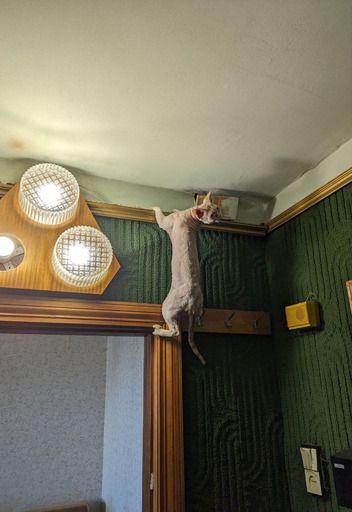
So what's the solution?
Hide those toys from them for a while. Take them out after some time, and you'll notice that your cat's engagement with them has improved.
Youtube viewers are the same. They won't be entertained if they are forced to watch the same ad too often. But instead of playing where they aren't supposed to, they'll do something worse. They'll start hating your brand.
You need to find the optimal balance between ad frequency and viewer engagement. Adjust the frequency capping settings to control how often your ads are shown to users. Avoid bombarding viewers with excessive ad repetitions, as it may lead to ad fatigue and negative associations with your brand.
Here's how you can approach this:
- Set up frequency capping: On YouTube, you can control the frequency of your ads using frequency capping settings. This allows you to set a limit on how many times your ad is shown to the same viewer in a given time period.
- Start with a moderate frequency: A good starting point might be showing your ad to the same viewer a few times a week. This frequency can keep your brand at the top of the viewer's mind without overwhelming them.
- Monitor viewer response: Keep an eye on metrics like click-through rate and video view duration. If these metrics start to decrease, it may be a sign that viewers are seeing your ad too often and are starting to ignore it.
- Adjust frequency as needed: If your metrics suggest that viewers are experiencing ad fatigue, reduce your ad frequency. If viewers are engaging well with your ad and conversion rates are high, you might experiment with slightly increasing the frequency to see if it boosts results.
- Segment your audience: Consider adjusting the frequency based on audience segmentation. For instance, viewers who have already visited your website or interacted with your brand might be more receptive to frequent ads than new viewers.
- Test and learn: The optimal ad frequency can vary depending on many factors, like the type of product you're advertising, the quality of your ad, and the characteristics of your target audience. Therefore, it's a good idea to continuously experiment with different frequencies and monitor the results to find the most effective strategy for your specific situation.
11. Tailor your videos to different formats
To maximize the impact of your brand's YouTube channel and ads, it's essential to understand and adapt to ad formats:
- Skippable Video Ads: These can be skipped after 5 seconds. Make sure the start grabs attention!
- Non-skippable Video Ads: These can't be skipped and are short. So, deliver your message fast!
- Bumper Ads: These are super short and can't be skipped. They should be simple and catchy!
- Display Ads: These are picture ads seen next to the video on a computer.
- Overlay Ads: These small ads show up over the video on a computer.
- Sponsored Cards: These pop up during the video, perfect for showcasing products!
- Discovery Ads: These video ads appear on YouTube's homepage and search results to get more views on your videos.
Case Study of a Successful YouTube Ad
Let's dive into how we made a winning YouTube ad for Mindvalley's "Masterclass" series.
Making Mindvalley's Ad
We created an ad with life coach Marisa Peer. In the ad, she gave a powerful talk about believing in oneself, which would encourage viewers to sign up for her course.

How We Made the Ad Work
Knowing Our Audience
We aimed the ad at people interested in personal growth and self-improvement. Having Marisa Peer in our ad was a surefire way to connect with these viewers.
Keeping Content Interesting
We made sure our ad was engaging from the get-go with Marisa's inspiring talk. This helped viewers watch the whole ad and think about taking the course.
Making the Ad Easy to Find
We used the right keywords in the title, description, and tags of landing pages for our ad, so it would show up when people searched for related content.
Picking the Best Ad Type
We chose an ad type that viewers could skip if they wanted to. This let us share a longer message, and interested viewers could watch the whole thing.
Focusing on Quality
Our ad looked and sounded professional. This made our ad more credible and helped keep viewers engaged.
Learning from Data
We looked at how many people watched our ad, how long they watched it, and how many clicked on it. This helped us understand what was working and what we could improve.
Encouraging Action
We ended our ad by asking viewers to sign up for the Masterclass. This clear call-to-action helped turn viewers into potential customers.
Conclusion
As we've explored, the key to creating winning YouTube ads lies in understanding your audience, crafting engaging video content, optimizing for discoverability, choosing the right format, ensuring high quality, using analytics to guide improvements, and ending with a compelling call-to-action.
But the learning doesn't stop here. Now, it's your turn. Use these best practices as a launching pad for your own YouTube ad strategies. Experiment, learn, and have fun in the process. Here's to creating ads that not only win but also make a lasting impact. Go forth and let your brand's voice resonate on the YouTube platform!
Frequently Asked Questions
How can I ensure my YouTube Ads reach my target audience?
To make sure your ads reach the right people, it's crucial to define your target audience. Use YouTube's targeting options, like demographics, interests, and behaviors, to make the Google Ads algorithm reach the viewers who would be most interested in what you offer.
What specific techniques can I use to improve SEO for my YouTube Ads?
For better SEO, use relevant keywords in your video title, description, and tags. Also, transcribe your Youtube videos or provide subtitles as YouTube's algorithm scans this text for keywords to understand what your video is about.
What criteria should guide my choice of YouTube Ad format?
Your choice of ad format should depend on your goals, budget, and content. Skippable in-stream ads are good for longer messages, while non-skippable ads are better for short, impactful messages.
How can I boost viewer engagement with my YouTube Ads?
To make your ads engaging, start with a strong hook to grab attention. Keep your message clear and simple, use high-quality visuals and sound, and include a clear call-to-action.
What specific insights should I look for in YouTube Analytics to improve my ads?
In YouTube Analytics, focus on watch time, audience retention, engagement, and click-through rate. These metrics show you how well your video ad campaign is performing and what you can improve.
How can I craft a compelling Call-to-Action (CTA) in YouTube Ads?
A good CTA is clear, direct, and encourages viewers to take action right away. It could be as simple as "Learn More," "Sign Up," or "Buy Now." Make it stand out visually in your ad.
How does high-quality video production influence the success of my YouTube Ads?
High-quality video production makes your ads look professional and trustworthy. It can help hold viewers' attention, make your message clear, and boost display campaigns' overall viewer engagement.


